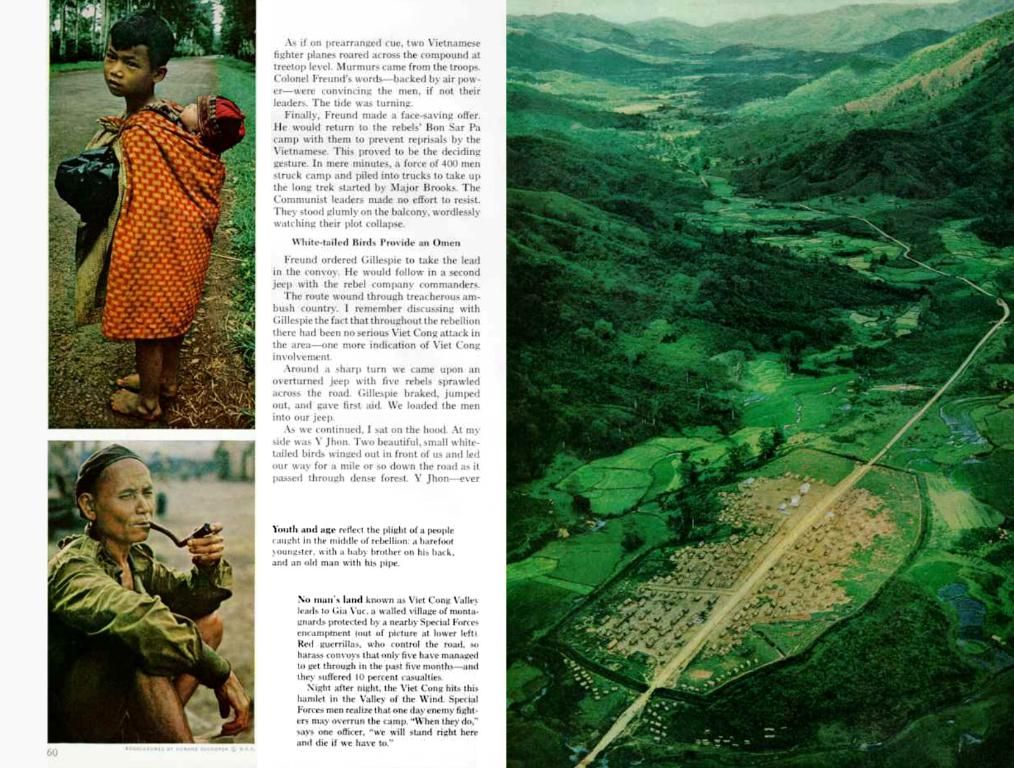Intense weather event strikes Bucharest, leading to flooding and transport disruptions
Storm of the Century: Bucharest Fights Back Against a Deluge
A monstrous storm rampaged through Bucharest on Monday afternoon, June 9, setting off a massive emergency response as relentless rain swamped the city's foundation. Multiple roads and boulevards were submerged, with social media posts displaying water surging onto buses and numerous vehicles left marooned amidst the flooded highways.
The National Meteorological Administration (ANM) issued repeated orange-tier alerts for Bucharest and Ilfov, with downpours exceeding 50 liters per square meter in just an hour at the Filaret station and over 42 l/sqm in half an hour at Băneasa. In certain parts of the city, rainfall momentarily surpassed 120 l/sqm—a level utility company Apa Nova deemed a "never-before-seen" occurrence, according to News.ro.
Transit services felt the brunt of the storm, with disruptions occurring across several sections of the city. However, most lines were subsequently restored as the storm subsided.
The Bucharest-Ilfov Emergency Situations Inspectorate (ISU) received over 800 emergency calls by 8 PM, acknowledging more than 250 incidents requiring attention. Over 550 firefighters, including those summoned from their off-duty shifts, were mobilized, using 56 fire engines, 7 extrication vehicles, and 64 motor pumps to manage emergencies spanning from inundated homes and roads to fallen trees.
The Bucharest City Hall steered a broad on-ground intervention to address the storm's impact, while provider Apa Nova stated that it deployed all accessible personnel and machinery, rolling out 20 high-pressure cleaners, 62 utility vehicles, 47 pumping units, and over 300 field workers, with their focus primarily on the hardest-hit areas of districts 4 and 5.
Environment minister Mircea Fechet, caught in the tempest near Tineretului Park, likened the event to a burgeoning trend of climate-related calamities. "In less than an hour, climate change revealed its presence," Fechet stated. "Today's occurrence isn't a standalone weather event — it's yet another alarm bell in an ongoing series."
Fechet emphasized outdated infrastructure, insufficient greenery, and haphazard urban planning as critical weaknesses, cautioning that future storms could prove even more disastrous unless substantial investments are made in climate resilience and adaptation.
"We'd better act now with smart investments in green solutions and education, or we'll keep tallying the devastation every time the heavens open," Fechet warned.
irina.marica@our website
(Image credit: Inquam Photos /Codrin Unici)
(Note: The June 2025 storm affected Bucharest’s infrastructure, public transport, and emergency response severely. Utility company Apa Nova described rainfall that surpassed 120 liters per square meter in some areas as a "never-before-seen" event. The city’s infrastructure was evidently ill-prepared for such extreme weather. Over 550 firefighters were mobilized, and the Bucharest City Hall coordinated ground interventions to mitigate the storm’s impact. Environment minister Mircea Fechet referred to the event as a sign of climate change, underscoring the vulnerability of urban infrastructure in the face of such extreme weather. These details have been integrated into the article to provide additional context and clarify certain aspects of the storm's impact on Bucharest without overloading the content.)
The storm in Bucharest, classified as the 'Storm of the Century', was not just a weather event but also a powerful reminder of climate change, as environmental science predicts. The exceptional rainfall of over 120 liters per square meter, recorded during the storm, is a significant concern for future weather forecasting and the potential impact on the city's environment and infrastructure.








